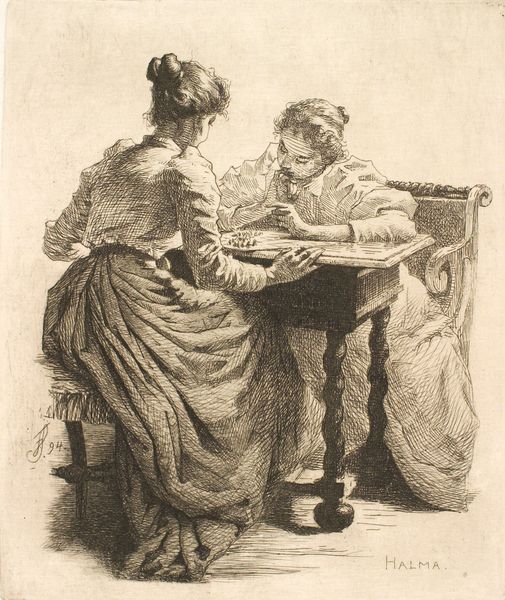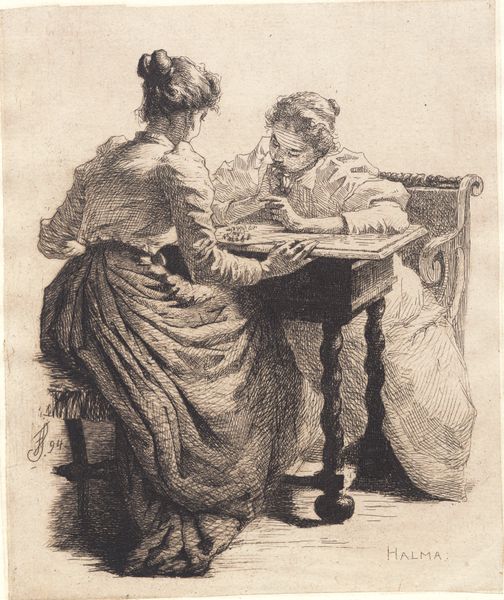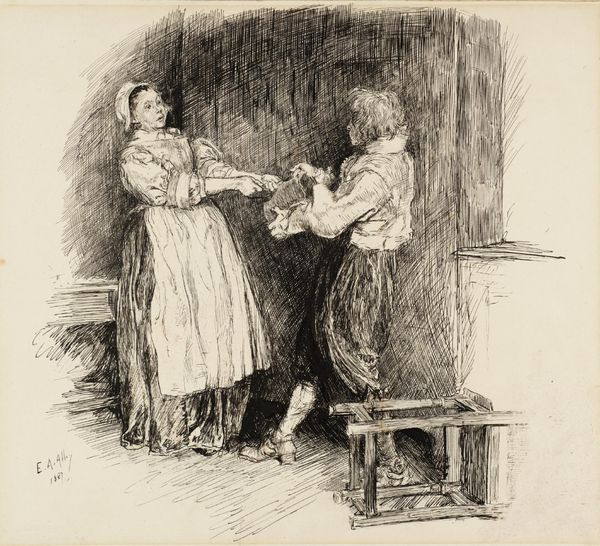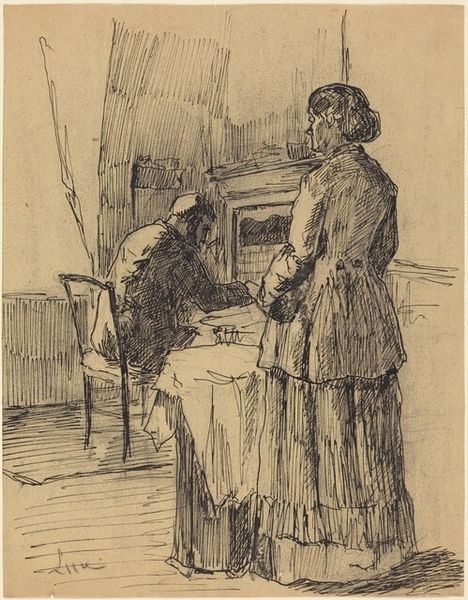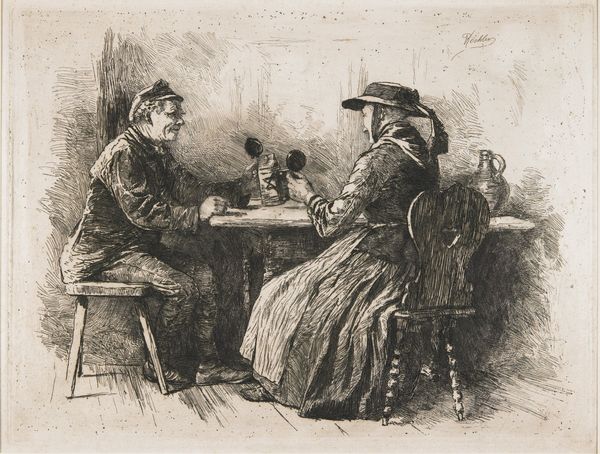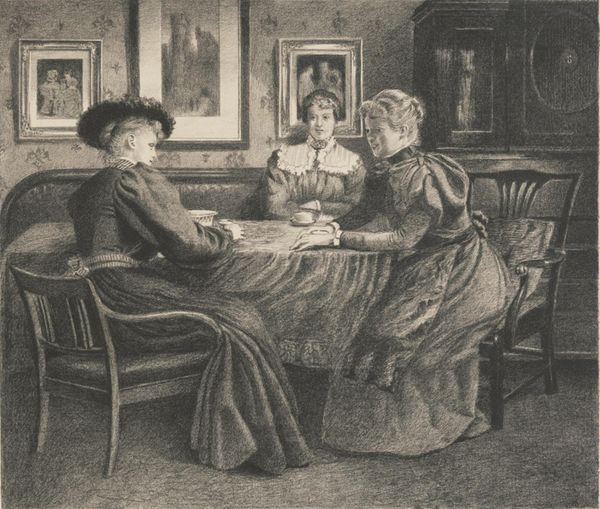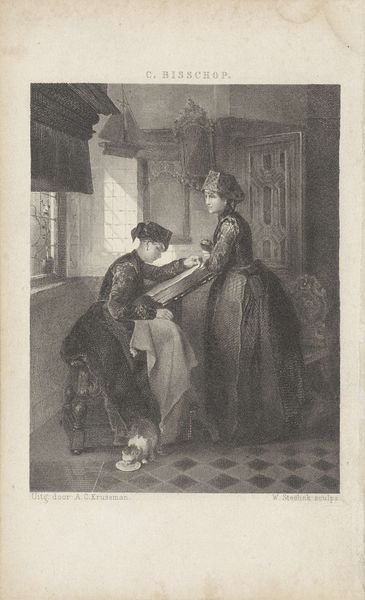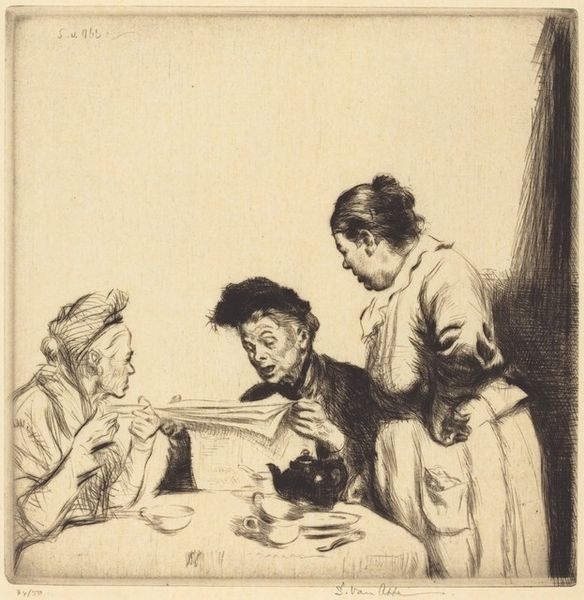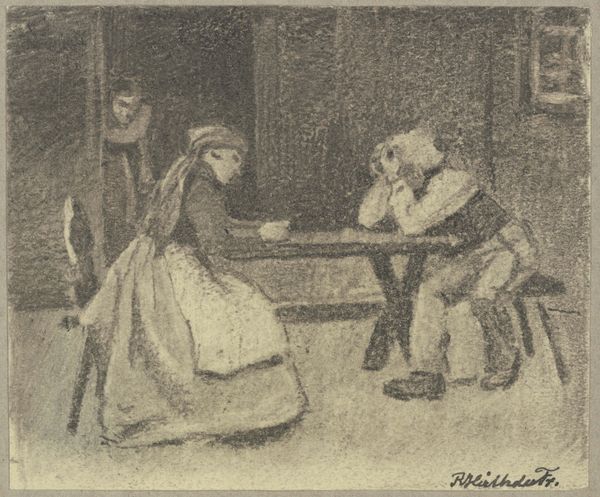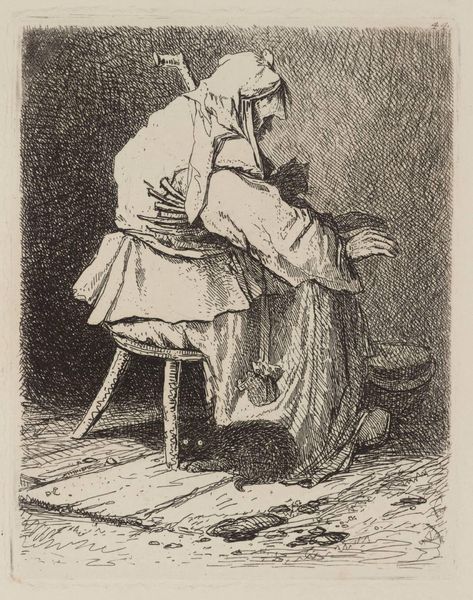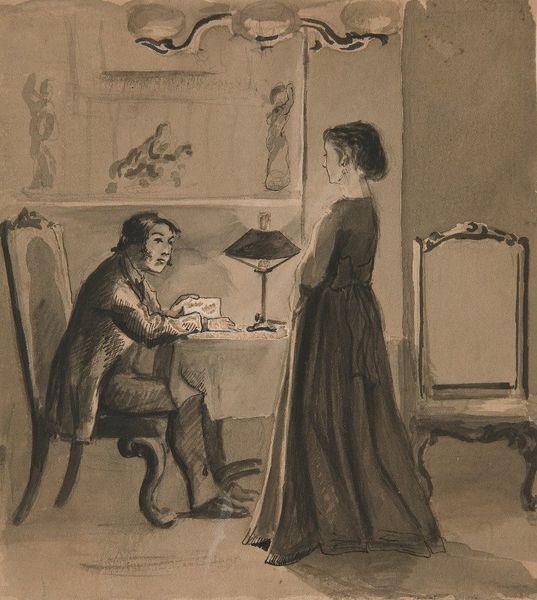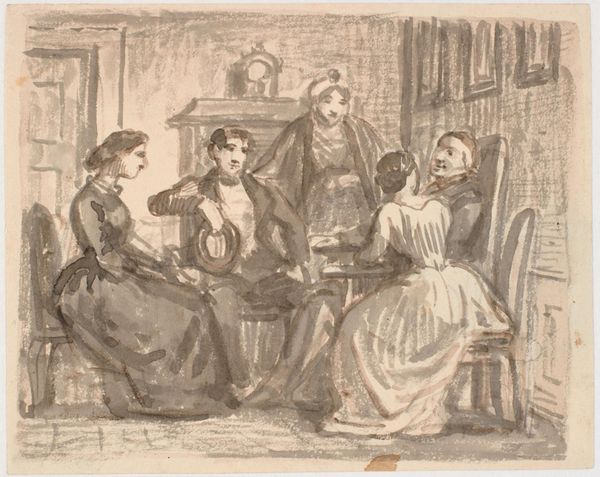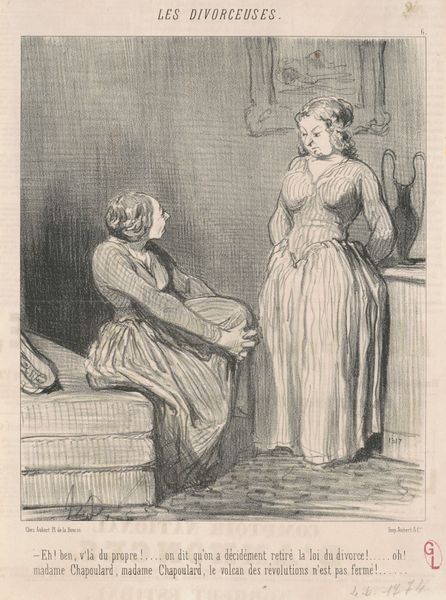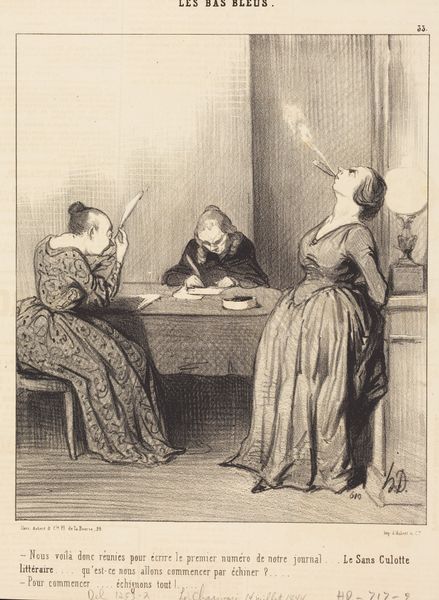
print, etching
#
portrait
# print
#
etching
#
figuration
#
portrait drawing
#
genre-painting
#
realism
Dimensions: 172 mm (height) x 144 mm (width) (plademaal)
Frans Schwartz made this print called Halma in 1894. It shows two women playing the board game of the same name. Halma was invented in the 1880s and its popularity as a parlor game coincided with increasing leisure time for the middle classes. The image creates meaning through the careful rendering of domestic space, which has implications for how the women are read. The women are dressed in contemporary fashions. It was made in Denmark, a country that was undergoing rapid social and economic change at the time. The rise of industrialization and urbanization led to the emergence of a new middle class, who had more leisure time and disposable income. This print reflects the values and concerns of this new middle class, particularly the importance of domesticity, leisure, and social interaction. To understand this image better, we might turn to sources that explore the history of games, leisure, and gender in the late 19th century. Art’s meaning is contingent on these social and institutional contexts.
Comments
No comments
Be the first to comment and join the conversation on the ultimate creative platform.
